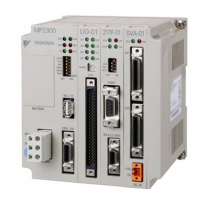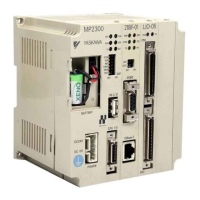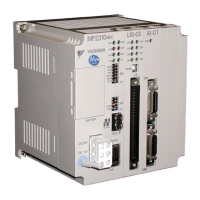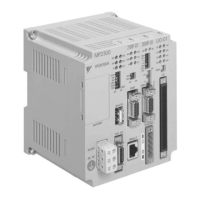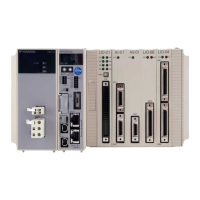TECHNICAL NOTE
MOTION APPLICATION ENGINEERING GROUP
Yaskawa Electric America - 2121 Norman Drive South – Waukegan IL 60085
(800) YASKAWA - Fax (847) 887-7280
11/23/2005 22 of 22 eng/05.055/MCD
MEMORY ALLOCATION
What is Memory Mapping?
Memory mapping is the recommended layout of MP2000 memory. Memory mapping defines the
layout for both global and local registers and is intended to keep the data as organized as
possible. A useful tool is available to define memory, refer to document eng.MCD.05.097 (Best
Practices Global Memory Registration Map).
Why is it important?
Memory mapping is important because it provides a consistent layout that increases program
flexibility, and reduces development and troubleshooting time
Memory mapping increases program flexibility for many reasons. Grouping information together
can be beneficial for many reasons, such as:
1) Ease and speed of transfer (HMI)
2) Cam tables
3) Recipe tables
Troubleshooting time is reduced when a consistent memory map is followed; errors are easily
diagnosed since the range of registers to be monitored is localized. Troubleshooting time is also
reduced because as the user programs additional applications using a consistent memory map,
the user gains familiarity with the layout and is able to navigate the MP2000 memory faster.
Lastly, having an organized and easy-to-navigate memory map also helps to reduce
development time. Using a consistent memory map eliminates the setup time required to layout
the memory, as well as providing a proven and robust memory layout to eliminate confusion and
reduce programming errors.
Memory mapping with function blocks
When using functions blocks, the function block RDA (reserved data area) is MW30000-
MW65535, meaning that these registers are reserved for function blocks and cannot serve the
user in any other capacity. The allowable range for user addresses when using function blocks is
MW00000-MW29999.

